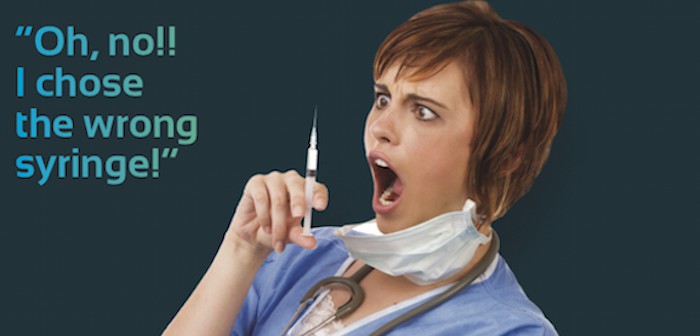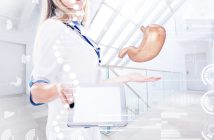Would you be confident taking your driving test—when it’s only your second or third time behind the wheel? Would you be able to play perfectly for your first music performance—if the room was packed with spectators awaiting a professional Chopin recital? Would you remain calm and stress-free while cooking your first ever meal for guests—when it’s Thanksgiving dinner for the in-laws?
These are not quite the scenarios that allied health students encounter when they begin performing clinical skills and procedures—but in terms of the level of stress created, they’re not that far off, either!
The truth is that novice healthcare professionals are often expected to perform complex procedures, including ones which may involve sophisticated technology, with only scant practical training. It is a simple matter of logistics: while most schools feature lab facilities and simulation centers for student training, access is limited and demand is great. Rarely, if ever, is access to these resources available on demand, which means that practice times are restricted.
Furthermore, research is increasingly demonstrating the detrimental effects of the way many allied health and nursing programs are structured, where a myriad of skills are frontloaded so they are ‘‘taught but forgotten’’ very quickly (Gonzalez & Kardong-Edgren, 2017). The negative effects can range from a damaging decrease in confidence and self-efficacy on the part of allied health students, to the committing of preventable errors that compromise quality of patient care or even patient safety.
Renowned author Malcolm Gladwell (2008) popularized Ericsson’s (1993) hypothesis that 10,000 hours of deliberate practice are required to become an expert in a particular skill. This has been questioned, but even if it only takes 1% of that time—100 hours—to become adequately skilled in a procedure, it is clear that allied health students are expected to know how to perform many procedures, some invasive, with only a fraction of that amount of practice for each one.
Restricted access to the facilities and equipment needed to practice these procedures means that students are typically left studying textbooks, videos, and static online representations that have little relation to the lived reality. Words and checklists on a page cannot duplicate the mental processing that must be done when you insert a hypodermic syringe at the correct angle into a vein, or the thought process that goes into obtaining a clear ultrasound image of a suspicious mass. Photos in a Powerpoint file bear little resemblance to a living patient sitting in front of you. And no textbook can simulate effectively the process of performing arthrography on a squirming toddler or catheterizing an elderly gentleman.
This is where SIMTICS web-based simulations meet a pressing need: they bridge the gap between theory and real life. With SIMTICS, students in the health professions can practice performing clinical procedures and skills using realistic simulations, and then test their competence, and return to refresh their skills at any time. There is no longer a total reliance on elusive lab time, or having to vie for the attention of an instructor or preceptor. There is no longer a fear of mishandling unfamiliar—and often expensive—equipment or of using up consumables due to repeated attempts. As long as students have access to the internet and a computer or tablet, they can use SIMTICS simulation-based learning modules to practice whenever and wherever they choose—repeating the procedures as many times as needed to master them at a cognitive level, in readiness for practicing and performing them in real life.
Students can learn at their own pace, and individualize their learning by focusing on skills that are particularly concerning to them. This helps them to ensure that, when the time comes for the real thing, they are confident, familiar, and ready. These benefits of simulated learning in the health professions have been borne out in a growing body of literature, from a 2007 report in the Annals of Surgery (Aggarwal et al., 2007), to more recent studies, which have continued to demonstrate that cognitive simulation, the combination of mental and physical practice (via simulation), significantly increases surgical trainees’ mastery of new surgical skills (Park et al. 2011).
We would not dream of sending a student driver on a cross-country trek in the driver’s seat of an 18-wheeler. We would not conceive of sitting a novice pianist centerstage at the Royal Albert Hall. Nor would we invite our mother-in-law to taste our Holiday turkey when we’re still learning the difference between a giblet and a gizzard. We would want each person to have enough time to practice until they were competent and confident. So why do we demand of our allied health students the mastery of difficult, sometimes painful, always high-stakes skills and procedures with little time to practice?
With the aid of web-based simulated practice, they would have a much better chance of developing that mastery and keeping their skills fresh.
References:
Aggarwal, R., Ward, J., Balasundaram, I., Sains, P., Athanasiou, T., & Darzi, A. (2007). Proving the effectiveness of virtual reality simulation for training in laparoscopic surgery. Annals of Surgery, 246(5): 771-779.
Gladwell, M. (2008). Outliers: The Story of Success. US: Little, Brown, and Company.
Ericsson, K. A., Krampe, R. T., & Tesch-Romer, C. (1993). The role of deliberate practice in the acquisition of expert performance. Psychological Review, 100(3), 363-406.
Gonzalez, L. & Kardong-Edgren, S. (2017). Deliberate practice for mastery learning in nursing. Clinical Simulation in Nursing, 13(1): 10-14.
Park, S.H. et al. (2011). Modelling surgical skill learning with cognitive simulation. Medicine Meets Virtual Reality, J.D. Westwood et al. (Eds.). IOS Press: 428-432.
About SIMTICS
SIMTICS is a leading provider of web-based skills simulations for allied health students and professionals. The SIMTICS online solution has been developed by academics and practitioners to help students learn clinical and medical imaging procedures anytime and anywhere — not just in class or in the computer lab.
SIMTICS provides instant feedback on each step in the simulations, so the student is guided to perform each procedure correctly. The system tracks study time, completion times, and scores and also logs individual errors, so learners can quickly identify exactly what needs to be worked on. Simulations can also be used in test mode to check competence. Reports are available to instructors, to view class activity and results. For more information or an online demonstration, contact us at [email protected].




